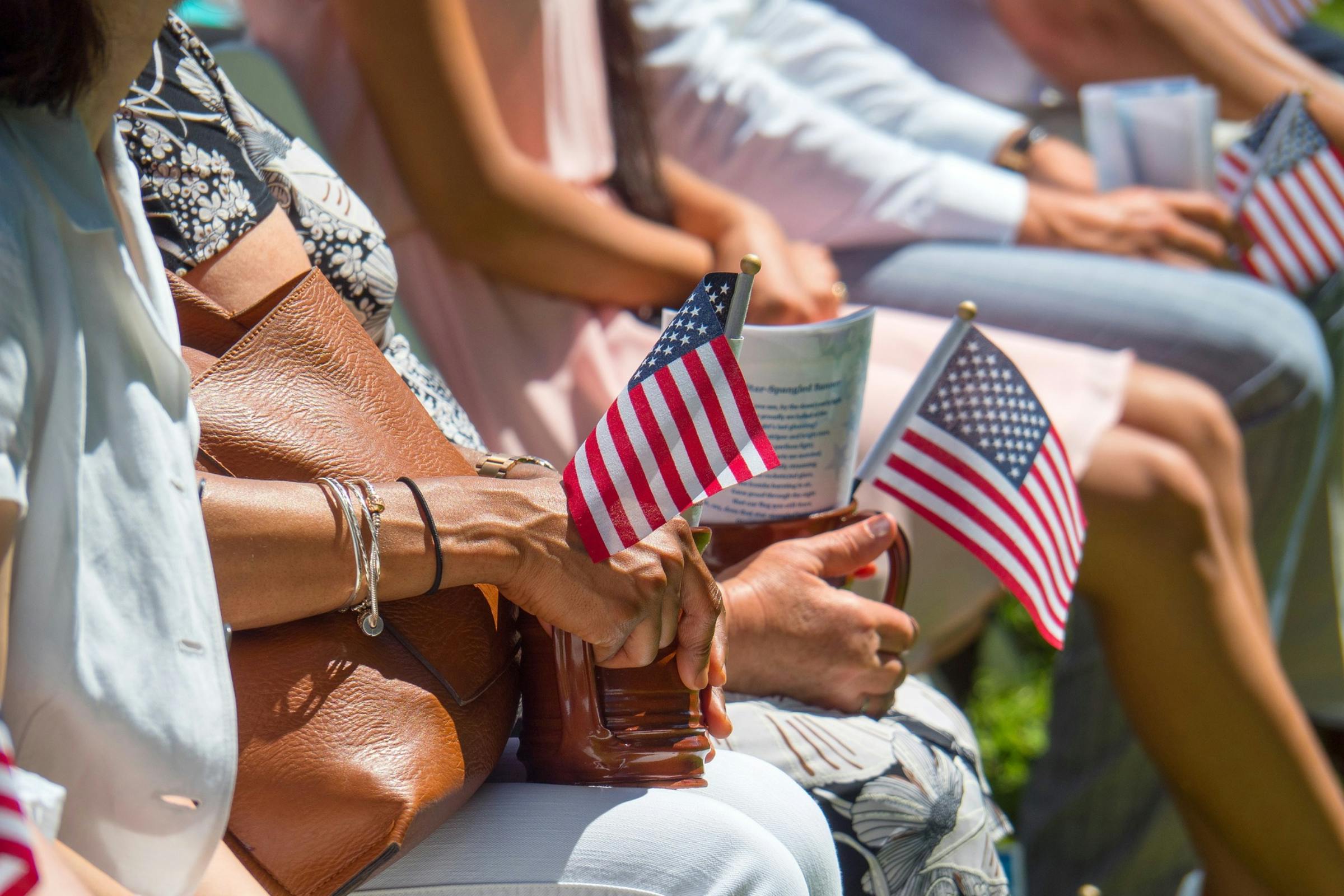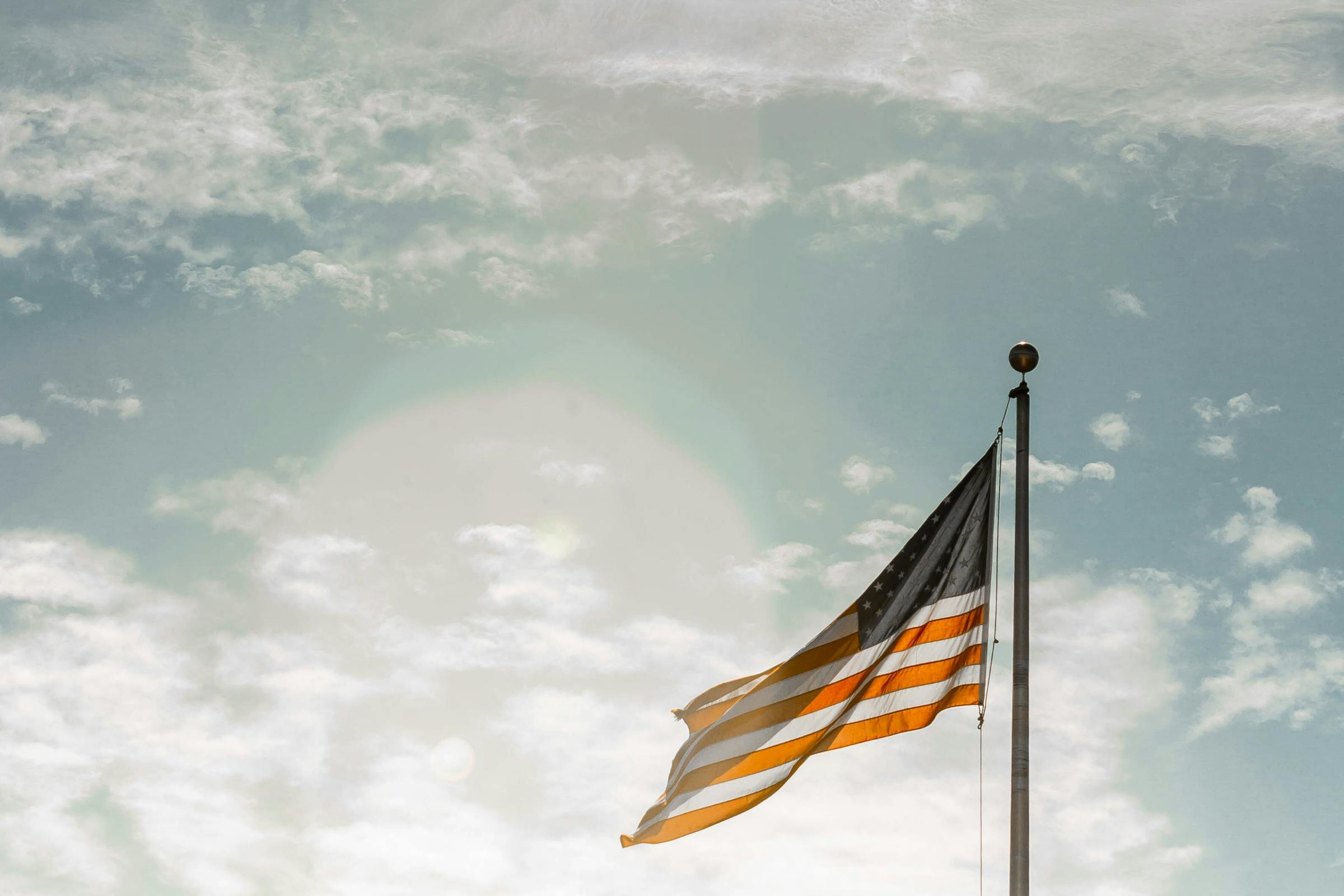Introduction
The EB1A eligibility criteria dictate that:
-The person (i.e., the client) has extraordinary ability in the sciences, arts, education, business, or athletics, which has been demonstrated by sustained national or international acclaim, and whose achievements have been recognized in the field through extensive documentation
-The person (i.e., the client) seeks to enter the United States to continue to work in the area of extraordinary ability
-The person’s (i.e., the client’s) entry into the United States will substantially benefit the United States in the future
To determine whether the person (i.e., the client) has extraordinary ability in their field—or whether the submitted evidence establishes that the client has extraordinary ability—adjudicators use the following two-step analysis:
- Assess whether evidence meets regulatory criteria: Determine, by a preponderance of the evidence, which evidence submitted by the petitioner objectively meets the parameters of the regulatory description that applies to that type of evidence
- Final merits determination: Evaluate all the evidence together when considering the petition in its entirety for the final merits determination, in the context of the high level of expertise required for this immigrant classification
In satisfying the first step of this analysis, our strategy has been to submit evidence confirming that the client has meet at least 3 regulatory criteria. In almost all cases, these are: Judge of the work of others, authorship of scholarly articles, and original contributions of major significance (OCMS). However, the USCIS has recently updated its policy manual, which has precipitated some changes in how certain regulatory criteria are defined. Although we do typically claim the same three criteria for most EB1A cases, there are actually 10 criteria in total, and the recent updates to the policy manual have potentially increased the feasibility of claiming additional “uncommon” criteria as a way to strengthen clients’ cases. This guide is intended to function as a reference for assisting you in evaluating “uncommon” EB1A evidence and advising clients.
Breakdown of the criteria
Below, we’ll go through each specific criteria and highlight what sorts of evidence could suffice in satisfying them (the criteria are ordered based on their appearance in the policy manual, so the order should not be taken as an indicator of their relative commonality).
- Receipt of lesser nationally or internationally recognized prizes or awards for excellence in the field of endeavor
“Receipt of…”: The award must be given to the client, though it doesn’t necessarily have to be an individual award. For instance, an award on which the client is named among 5 recipients could suffice. An award given to the client’s employer likely will not suffice.
“…lesser nationally or internationally recognized prizes or awards for excellence in the field of endeavor”: Awards don’t necessarily need to be open to everyone in the field, and student or early career awards are not automatically disqualified from this criterion. The main thing to look for here is the prestige of the awarding body. For instance, a scholastic award from somewhere like Harvard could potentially be used to satisfy this criterion because Harvard is a highly prestigious institution. Furthermore, we must establish that the award is given out based on the client’s achievements/contributions.
What evidence do we need?: We should submit the award itself, ideally with the client’s name included among the awardees. Generally, a certificate will suffice, but on occasion clients may receive a physical award during some sort of ceremony, so any communications about the ceremony (emails, media reports after the fact, etc.) that confirms the client received the award should suffice. We should also plan to submit anything that describes the criteria used to grant the award, the number of awardees, or limitations on competitors. Essentially, anything that confirms why the award was handed out and why receiving it is notable. Additionally, to demonstrate the prestige of the awarding body, we should submit evidence that establishes their renown, such as a university ranking, media reports about the organization, etc.
Examples of awards that could potentially qualify from USCIS policy manual:
● Certain awards from well-known national institutions or well-known professional associations;
● Certain doctoral dissertation awards; and
● Certain awards recognizing presentations at nationally or internationally recognized conferences. - Membership in associations in the field for which classification is sought that require outstanding achievement of their members, as judged by recognized national or international experts in their disciplines or fields
“Membership in associations in the field for which classification is sought…”: The evidence must show that the client is a member in good standing, and the association must be related to the client’s field. For instance, if the client is an electrical engineering, discussing their membership in the IEEE could be helpful.
“…outstanding achievement of their members…”: Entry should ideally be merit based. For instance, if securing a membership only requires signing up and paying a free, it probably isn’t notable. Keep in mind that selectivity is not necessarily an indicator of a membership’s importance: if membership is determined based on a lottery system or the association only grants a certain number of memberships in a specific period, then the membership might not be considered notable. Some organizations may also offer “fellowships” that are similar to memberships but are highly exclusive (the IEEE, for instance, has a fellowship program for IEEE members who have made “extraordinary accomplishments” in their field—this would be a membership that could likely satisfy this criterion).
“…as judged by recognized national or international experts in their disciplines or fields”: The final “prong” to determining a membership’s significance is whether entrance into the association is determined by experts. This could include a council, panel, or committee of fellows or other members of the association.
What sorts of memberships are unlikely to count?: In some situations, the level of membership may clue you in to its renown. For instance, a student membership in virtually any association is not likely to qualify for this criterion. In other situations, you will need to dig a bit deeper to analyze what factors are considered in granting an applicant membership in the corresponding association. For instance, if entry is granted to anyone with a certain number of years of experience in the field, this membership is not likely to suffice. As another example, if membership is granted based merely on the nature of the client’s occupation—or is compulsory membership at their employer’s behest—this is not likely to suffice. Paying a fee upon entry or regular membership dues does not necessarily disqualify a membership. For instance, if the client is granted entry into an association based on their significant achievements in their field and are required to paid membership dues, this should be fine.
What evidence do we need?: We will need evidence confirming that the client is an active member in good standing, which could include a membership card, certificate, or a printout of their online membership profile on the association’s website (if available). We should also include some information about the association itself, such as an About Us page, a copy of the association/organization’s bylaws or constitution, etc. Additionally, we will need evidence showing what criteria and procedures are followed to admit new members (this can sometimes be found in the bylaws or constitution). In some cases, testimonial letters from the associations can be considered to confirm the membership criteria and selection procedures. - Published material about the person in professional or major trade publications or other major media relating to the person's work in the field for which classification is sought.
“Published material…”: The report must be in print. If the client’s work was featured on a television or radio broadcast, we would need to submit a transcript—and translation, if applicable—of the broadcast.
“…about the person…”: The published material should be about the client, but the client does not necessarily need to be the only person named. For instance, if the report focuses on the work undertaken by a team of which the client was a member, this could be considered for this criterion. However, the client should ideally be mentioned specifically and the importance of their role should be elucidated.
“…in professional or major trade publications or other major media relating to the person's work in the field for which classification is sought.”: There is a two-prong element to satisfying this: First, the source itself should be notable (national or international readership, longstanding history, etc.); second, the article should chiefly focus on the client’s contributions to the field (and not merely be about their personal life).
What evidence do we need?: The report itself (or, in the case we are using audio or video coverage, the transcript) must be from a major, distinguished, independent source. Therefore, press releases from the client’s employer/university, coverage in a college newspaper, and marketing materials are unlikely to suffice in satisfying this criterion. Furthermore, the report must broadly cover or include a substantial discussion of the client’s work or work on which the client was a primary contributor. If the client did play a substantial role in the work being discussed but is not named, we may need to consider evidence like emails that can function as evidence on record that the client’s contributions were majorly significant. Testimonial letters may potentially be considered in some circumstances but are not ideal. Please discuss this with either your attorney or the TMs. Of course, the evidence (i.e., the report) must include the title, date, and author of the material, along with any corresponding translations.
Additionally, we will need to provide evidence confirming the renown of the publication or major media. Acceptable evidence includes (but is not limited to) circulation statistics and readership statistics (for major media and trade publications) as well as information about the publication or intended audience (trade publications). There are various websites and aggregation services that can give you a general overview of a publication’s viewership (similarweb is one example) and many major media sources have press kits for advertisers that often contain circulation statistics. We should see if clients can provide this evidence, but we should be able to assist them in procuring it if necessary.
Examples of qualifying media included in the policy update:
● Professional or major print publications (newspaper articles, popular and academic journal articles, books, textbooks, or similar publications) regarding the person and the person’s work;
● Professional or major online publications regarding the person and the person’s work; and
● Transcripts of professional or major audio or video coverage of the person and the person’s work. - The person's participation, either individually or on a panel, as a judge of the work of others in the same or an allied field of specification for which classification is sought
The policy update to what we know as the peer review criteria did not cause any major paradigm disruptions. For this, we want to discuss the client’s peer review service as we usually would, using the thank you emails they received for completing each review as evidence. However, there are ways to satisfy this criterion beyond completing peer reviews for academic journals. In addition to journals, the USCIS policy manual lists the following examples of judging the work of others:
● Peer review of abstracts or papers submitted for presentation at scholarly conferences in the respective field;
● Serving as a member of a Ph.D. dissertation committee that makes the final judgment as to whether a candidate’s body of work satisfies the requirements for a doctoral degree, as evidenced by departmental records; and
● Peer reviewer for government research funding programs.
Therefore, if a client has indicated that they have completed service as an abstract reviewer, technical committee member for a conference in their field, a Ph.D. dissertation committee member, or a grant reviewer, these could potentially be used to satisfy the peer review criterion.
What evidence do we need?: As always, we should submit documentation confirming that the review in question has been completed. For peer reviews, thank you emails typically suffice. Similar emails may exist for other services, but other acceptable evidence could include certificates or webpages listing the client as a reviewer. Testimonial letters can also be considered in the absence of other documentary evidence. For service as a grant reviewer, I would also be a good idea to provide some details about the renown/purpose of the organization and how they select reviewers. - The person's original scientific, scholarly, artistic, athletic, or business-related contributions of major significance in the field.
This is what typically forms the “meat” of our EB1A cases: technical summaries of the client’s projects, notable citations, etc. Sometimes referred to as OCMS in internal communications. This is a two-part criterion that requires us to reflect the originality of the client’s contributions AND the significance of the contributions. The USCIS lists the following as relevant evidence:
● Published materials about the significance of the person’s original work;
● Testimonials, letters, and affidavits about the person’s original work;
● Documentation that the person’s original work was cited at a level indicative of major significance in the field; and
● Patents or licenses deriving from the person’s work or evidence of commercial use of the person’s work.
Overall, the considerations tend to be sort of broad and abstract, so this criterion tends to be the one we see challenged most often in RFEs.
What evidence do we need?: As mentioned, this tends to be one we throw a lot of evidence at, including the citation record, notable citation, funding, the client’s publications, government interest, patents, commercialization, etc. Essentially, anything that conveys that the client made original contributions and that those contributions are also majorly significant. The policy memo also indicates that “published research that has provoked widespread commentary on its importance from others working in the field,” so review articles/notable citations in review articles can be included in additional to original research articles/notable citations in original research articles. As always, please be judicious in your review of OCMS evidence and, of course, run any questions by your attorney or the TMs. - The person's authorship of scholarly articles in the field, in professional or major trade publications or other major media.
This, along with OCMS and peer review, is one we already claim for virtually every EB1A. the USCIS defines a “scholarly article” as anything that reports on original research, experimentation, or philosophical discourse and written by a researcher or expert in the field who is affiliated with a college, university, or research institution. The USCIS also lists peer review as a relevant factor in determining whether articles claimed as part of this criterion qualify and identifies publications in professionally-relevant peer-reviewed journals and published conference presentations at nationally or internationally recognized conferences as relevant examples of scholarly authorship. The USCIS also lists articles written “for learned persons” as potentially qualifying. This could include technical reports, industry guidelines, standards, or review articles.
What evidence is needed?: We need to submit evidence of the published work itself, in all cases with the client’s name highlighted in the list of authors, contributors, inventers, etc. Additionally, we need to submit evidence to confirm that the publication qualifies as a professional publication, major trade publication, or major media publication. This includes journal rankings, impact factors, etc. For trade publications, we should submit evidence showing the intended audience and, ideally, circulation/readership. - Display of the person's work in the field at artistic exhibitions or showcases
It is rare for us to get a client who whom this criterion should be claimed. However, should you receive a client with a degree in the arts (such as an M.F.A. or Ph.D. in music or humanities or something along those things), please get in touch with the TMs. - The person has performed in a leading or critical role for organizations or establishments that have a distinguished reputation
This is another criterion that can largely be distilled into two prongs:
“…person has performed in a leading or critical role…” The client’s title should reflect the criticality of their role (titles that may reflect a leading or critical role include: senior, principal, founder, chief, etc.) and their duties should clearly reflect the criticality of their duties. Furthermore, the contributions should be leading or critical to an organization or establishment overall, or a division or department of an organization or establishment
The policy memo includes the following examples of leading or critical roles:
● Senior faculty or senior research position for a distinguished academic department or program;
● Senior research position for a distinguished non-academic institution or company;
● Principal or named investigator for a department, institution, or business that received a merit-based government award, such as an academic research or Small Business Innovation Research (SBIR) grant;
● Member of a key committee within a distinguished organization;
● Founder or co-founder of, or contributor of intellectual property to, a startup business that has a distinguished reputation; and
● Leading or critical role for a distinguished organization or a distinguished division of an institution or company, as explained in detail by the director or a principal investigator of the relevant organization or division.
“…organizations or establishments that have a distinguished reputation…” The size and longevity of the organization or establishment are considered relevant factors but are not probative on their own for confirming the distinguished reputation. Media reports discussing the employer and information about the scale of the organization’s customer base can be considered in conjunction with details about the size and longevity of the organization.
What evidence do we need?: This is the lone criterion that specifically lists testimonial letters as useful evidence. Therefore, for any clients who may qualify for the critical role criterion, we should plan to draft testimonial letters to be signed by persons with knowledge of the significance of the client’s leading or critical role that specifically discuss how the client’s role was leading or critical. Testimonial letters may also include some details about the prestige of the organization or establishment, but we should supplement the testimonials with other evidence to confirm the distinguished reputation. For industry employers/companies, this could include details about the customer base, media reports, partners, funding, etc. For colleges and universities, this could include funding evidence, national rankings, confirmation of R1 status, etc. For startups, we would need evidence of outside funding from government organizations or angel investors. Sources for rankings/prestige info: NIH RePORTER (https://reporter.nih.gov/), Forbes, Statista rankings/stats.
In general, this may be a criterion we can claim with more regularity since the particulars of the criterion have been better defined in the policy update. - The person has commanded a high salary, or other significantly high remuneration for services, in relation to others in the field.
This is probably the “non-standard” criterion clients ask about most often. The language of the criterion does not indicate a specific percentile the client’s salary needs to fall within, but we typically do not recommend claiming high salary unless the client’s salary is in the top 10% of salaries of positions in their field.
“…has commanded a high salary, or other significantly high remuneration for services…” 90th percentile (or top 10%) is still the general cut-off but we can likely be a little more adaptable in claiming this criterion. Moreover, bonuses and other cash incentives beyond base salary can be considered in claiming this criterion. Special attention should be paid to the “has commanded” language, which indicates that clients can potentially claim this criterion even if they are not officially working for the employer paying the high salary or remuneration; prospective salary or remuneration may establish that the person has been able to command such compensation.
“…in relation to others in the field…” the vagueness of this language is what has dissuaded us from claiming high salary more frequently, as evidence confirming that one’s salary is high relative to others can take many forms and is therefore open to more interpretation. As such, it is important to ensure that the data we’re pulling corresponds a specific job title (and, potentially, within a certain geographic region).
The policy memo lists geographical or position-appropriate compensation surveys and organizational justifications to pay above the compensation data as potentially qualifying and identifies the Bureau of Labor Statistics (BLS) Overview of BLS Wage Data by Area and Occupation webpage and The Department of Labor's Career One Stop website as useful resources.
What evidence do we need?: This is one criterion that will probably require a good amount of evidence from a variety of sources. The BLS and sites like Payscale can be useful in gathering statistics to show average salaries and percentiles, and having the client submit their W2s, offer letters or promotion notices, and/or paychecks can be helpful for showing that they have received the salary being claimed. To help establish that the client has “commanded” the high salary, testimonial letters for employers can help justify or explain that the client is being paid a high salary as a direct result of their contributions, expertise, etc. As mentioned, specificity is critical when it comes to job titles, as the USCIS may discount titles that are too broad. For instance, “scientist” is most likely too broad; something like “applied scientist II” is much more specific. - Comparable evidence to establish the person's eligibility if the standards do not readily apply to the person's occupation
This criterion is sort of a catch-all that can function as a fallback in the event that a client wishes to claim a criterion that might not readily apply to them. For instance, if a client works primarily in industry and does presentations at trade shows instead of authoring papers, this could suffice in place of “publication of scholarly articles.” In a similar vein, a computer engineer whose “published contributions” mostly involve software packages or code uploaded to GitHub could consider claiming this criterion. Claiming this criterion will largely be situational so please feel free to loop in the TMs if you think this may apply.
Conclusion
In summary, the USCIS policy memo has adjusted the language of several EB1A regulatory criteria, in some cases rendering these criteria more readily applicable to our clients. We should remain highly judicious in our review of and consideration of all EB1A criteria (including OCMS, peer review, and authorship) but several of the more “uncommon” criteria may be able to be implemented in cases on a more frequent basis.














